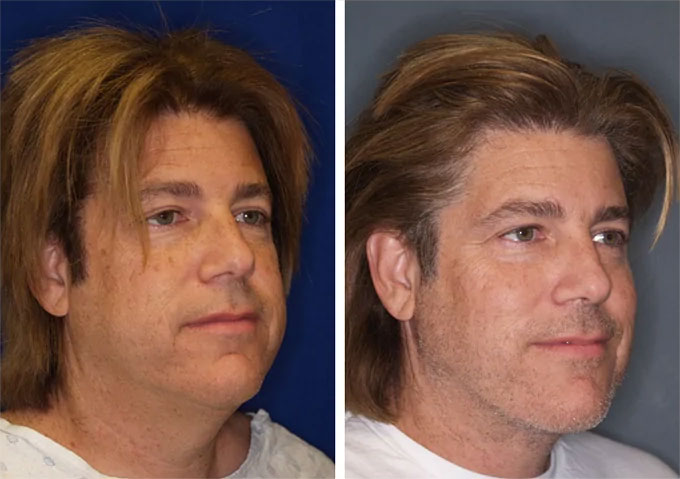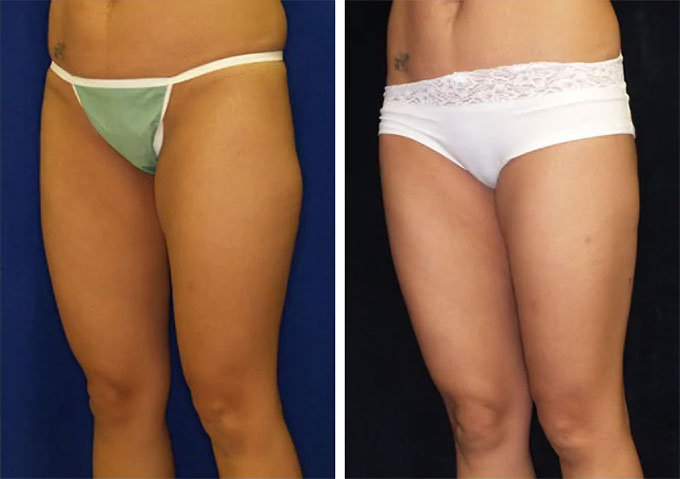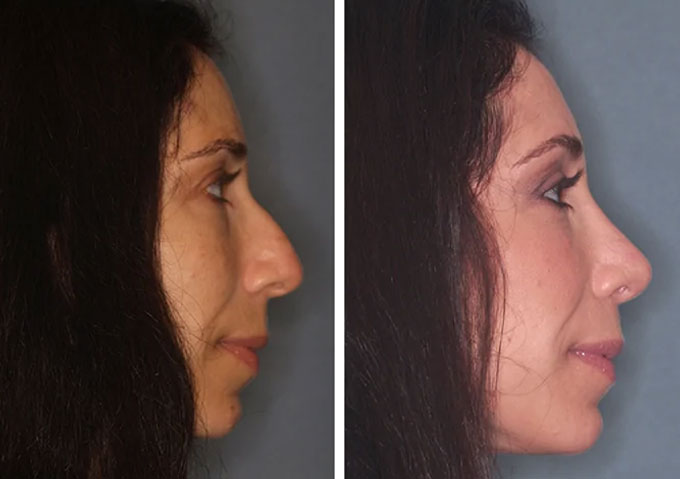Eyelid Surgery in Beverly Hills
Also known as an Eyelift or Blepharoplasty, this surgery improves the appearance of either the upper, lower, or both eyelids. This surgery is used to correct hanging, loose, or puffy skin in the upper lid, as well as loose or puffy skin in the lower lids. Additionally, deep grooves under the lower lids that give the appearance of being tired can be corrected with this type of surgery.
Many people who are considering eyelid surgery are also potential candidates for a brow lift, a facelift, fillers like Juvederm, and botulinum toxin injections.
About Your Eyelid Surgery Procedure
Precise skin markings will be made by Dr. Minniti to indicate landmarks and potential incisions. In the upper lid, the scar can fall in the upper lid crease, but may extend to the lateral orbital area where it can potentially be seen. In the lower lid, the scar can be on the inside of the lid, also known as the conjunctiva (transconjunctival incision). Frequently, a laser or a chemical peel can be performed to smooth and tighten the lower lid skin. Alternatively, a ‘skin pinch’ excision may be performed to tighten skin, leaving an incision just under the eyelashes of the lower lid.
Skin and sometimes muscle is reduced by Dr. Minniti using a scalpel and sharp scissors. Sometimes fat is reduced to alleviate puffiness, usually in the lower lids. Frequently, fat in the lower lids is partially released and repositioned into the upper cheek; this has the two-fold effect of decreasing puffiness and smoothing the transition between lid and cheek. Sutures are placed to close incisions, which are treated in 5 to 7 days.
When To Consider Eyelid Surgery
Eyelid surgery has many benefits. It will reduce the puffiness and fullness in both your upper and lower lids, as well as extra skin that may obstruct vision in the upper lids. The scars can be well hidden in the upper lid crease, under the lower lid lashes, or on the inside of the lower lid. There are some negative issues to consider. There may be a few weeks before your results become evident, mostly due to bruising and swelling. Your eyes may be itchy and dry following your procedure, and this may require additional eye drop medications for a number of weeks after the procedure. Finally, if your eyebrows droop, you may also need a brow lift as well.
The most common reasons why you may consider eyelid surgery:
- Excess upper lid skin obscuring the natural fold
- Loose upper lid skin that obscures your vision
- Puffiness of the upper lids, giving your eyes a tired or sad look
- Loose and excessive upper lid skin making even application of makeup difficult
- Fine, loose skin of the lower lids with wrinkles
- Under eye bags or dark circles
Eyelid surgery or blepharoplasty can be performed on the upper or lower lids, or both. Your preoperative evaluation will determine the nature and extent of your surgery, and whether you will benefit from upper lid surgery, lower lid surgery, both, or a concomitant brow lift surgery. Depending on your anatomy, the surgery may involve a reduction of excess skin, muscle, or fat. Alternatively, lid tightening or fat repositioning may be indicated. Dr. Minniti will review your history, which will include medical conditions, previous surgeries, allergies, and current medications. In addition to your history and physical, your aesthetic goals will be discussed to help Dr. Minniti determine the best course of action.
Learn More
Preparing For Your Procedure
What To Expect During Eyelid Surgery
Dr. Minniti will answer any questions you have, take a detailed history and perform a physical exam, and provide thorough preoperative instructions. Some of the most important instructions include:
- If you smoke, you should stop at least four weeks prior to surgery. Smoking significantly increases the risk of complications, slows healing, and increases scar formation.
- If you drink alcohol, you should limit consumption two weeks prior to surgery, and stop completely 5 days prior.
- You will be given a detailed list of medications you will need to avoid one to two weeks prior to surgery. Medications that commonly need to be discontinued prior to surgery include anti-inflammatory drugs like aspirin, ibuprofen, and naproxen.
- Set up a place to recover at home prior to surgery. You should have prepared meals, plenty of fluids, pillows to elevate your head, and reading or entertainment available.
- Prior to your surgery, Dr. Minniti will determine if you will need to go to a certified aftercare facility or go home. A ride to and from the operative facility and a caretaker will be needed if you are going home.
The Surgery Day
The eyelid procedure will be performed in a fully accredited ambulatory surgical center in Dr. Minniti’s office building and usually takes about one to two hours to perform. After check in, Dr. Minniti will see you and discuss anything you want prior to starting. Dr. Minniti will make marks on your skin to determine incision placement and other landmarks. The nurse and the anesthesiologist will help you into the operating room and prepare you for surgery. Monitors will be placed to check your heart, blood pressure, pulse, and oxygen content in your blood. Medications will be administered by vein and by inhalation to ensure proper sedation to prevent pain and wakefulness. After the surgery is completed, a wrap will be placed around your head for application of gentle pressure and you will be awakened. You will be closely monitored in the recovery room until you are awake enough to leave the facility. Ice packs can decrease bruising and swelling and medications may help with mild discomfort and possible insomnia.
Aftercare and Recovery
Dr. Minniti will discuss your recovery and how long until you will be at a normal activity level. In general, you may have moderate swelling and bruising and may possibly be back to work in 7 to 10 days.
After surgery, it is best to use cold packs for 72 hours to reduce swelling. Sleeping on extra pillows to elevate your head is also important to reduce swelling. You will be seen the next day after surgery as well as one week and two weeks after surgery. You will be shown how to care for your incisions immediately after your surgery and Dr. Minniti will care for them as well the day after, reviewing the care process for you. Prescription eye drops will be given for use for the first few weeks after surgery. Sutures will be treated one week after surgery. You may not need drains. You may possibly shower two days after surgery; this will help clean the hair and reduce matting or knots.
During the first week after surgery, you may be able to increase your activity to the level of your comfort, however no heavy lifting. You may be able to resume driving when you feel able to react quickly, possibly 5 to 7 days. You may feel comfortable returning to work in 7 to 10 days. You may resume exercise in three to four weeks, depending on the individual.
Related Procedures
Brow Lift
Brow lift improves the appearance of the forehead by smoothing wrinkles and reducing the fullness in the upper eyelid.
Facelift
A facelift is a time-honed cosmetic procedure that can turn back the clock and make you look 10 years younger.
Rhinoplasty
Rhinoplasty, commonly known as a “nose job”, is a corrective nose surgery that enhances a nose’s shape and/or function.
Before & Afters
Patient Gallery



